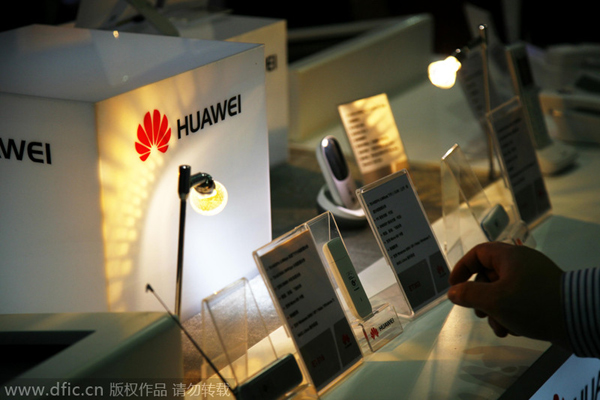Patent applications lead the world
Updated: 2015-02-24 10:58
By Wu Yiyao in Shanghai(China Daily)
|
|||||||||||
 |
|
Visitors try out Huawei products during an exhibition in Beijing, China, 12 October 2010. Huawei Technologies, the world's biggest maker of telecommunications equipment, was granted 2,409 invention patents in 2014. [Photo/IC] |
The office found that about 663,000 inventions had high quality and market value. About 4.9 patents per 10,000 population were filed, according to the data.
Enterprises have been pillars of research and the development of new technologies and products, according to the office.
In 2014, about 485,000 invention patent applications were filed by enterprises, more than the number filed by individuals, academies or research institutes.
"It shows that China has already established a new technological innovation system that is strongly bolstered by enterprises," said Gan Shaoning, deputy head of the office.
Huawei Technologies, the world's biggest maker of telecommunications equipment, was granted 2,409 invention patents in 2014, according to the SIPO data.
China's inventors need to raise the quality of their inventions in order to catch up with world's best, Gan said.
Market insiders said economic growth, as well as higher demand from industry and individual consumers, have pushed up the number of inventions.
"New inventions enable businesses to run at lower cost, with greater efficiency and with more care for the environment. For customers, inventions simply mean a better life and more choices," said Zhang Ming, a Shanghai-based patent consultant.
In 2014, applications for invention patents accounted for 39.3 percent of all applications, exceeding that of so-called utility model applications - mainly cosmetic design or appearance - which stood at 36.8 percent, a recent SIPO circular said.
One of China's priorities has been to boost innovation by improving protections for intellectual property, an effort that has induced many intellectual property rights firms to expand business here.
The country also plans to set up a standardized IPR service system by 2020, according to a guideline jointly released by the SIPO, the Standardization Administration, the State Administration for Industry and Commerce and the National Copyright Administration.
Awapatent, a consultancy firm specializing in intellectual property, launched its Asian arm this month in Beijing and Hong Kong - AWA Asia - in response to increasingly frequent calls from clients in the region.
wuyiyao@chinadaily.com.cn
Related Stories
China tops patent applications list in 2014 2015-02-23 18:49
Patent dispute threatens Xiaomi's India future 2015-02-13 09:17
"2014 Chinese Patent Rankings" Released 2015-01-26 16:08
Today's Top News
Vietnam's travel companies cash in on Lunar New Year holiday
Kiwi opposition blasts troop deployment to Iraq
UN Charter indispensable in maintaining peace, stability: Chinese FM
China highlights four "dos," "don't" in developing international relations
It's not just the gift, but the thought behind it
Alejandro G. Inarritu wins Best Director for 'Birdman'
Chinese enjoy shopping, massages and travel to ring in New Year
Turkish retired general prefers China missiles
Hot Topics
Lunar probe , China growth forecasts, Emission rules get tougher, China seen through 'colored lens', International board,
Editor's Picks

|

|

|

|

|

|





